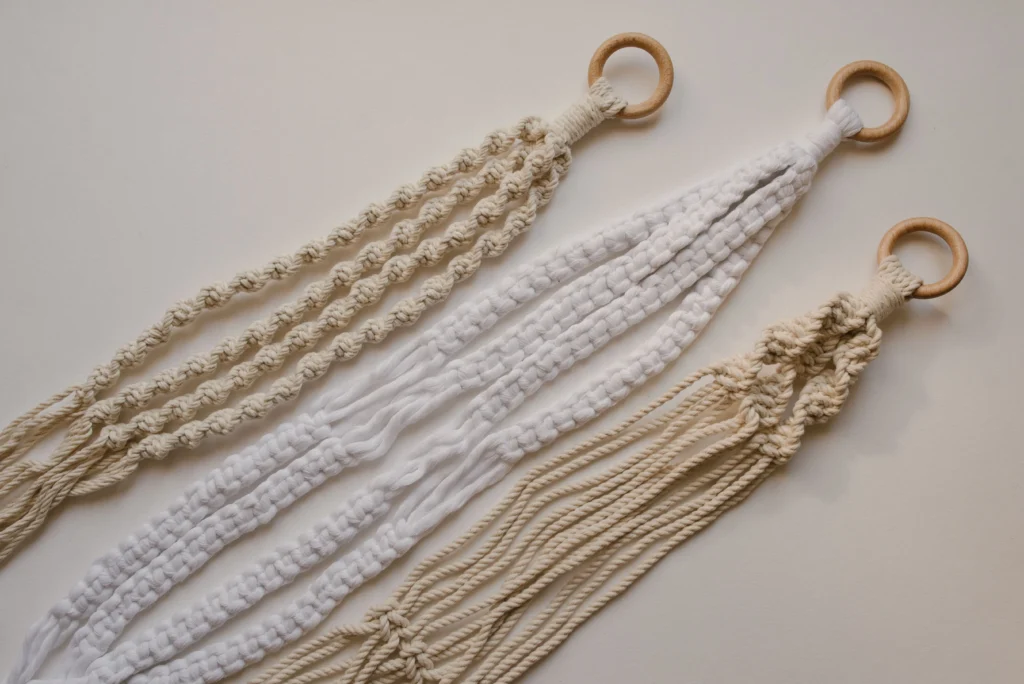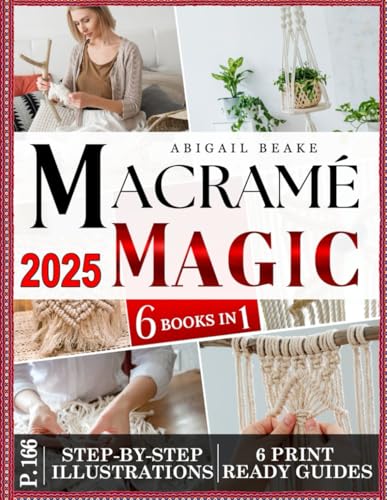
The art of macramé, with its intricate patterns and exquisite textures, has been a form of creative and decorative expression since time immemorial. Macrame knots, in particular, are the very essence of this technique, and mastering them opens up a world of possibilities for creating everything from wall decorations to fashion accessories.
In this article, we will explore the basic knots, patterns and essential techniques to get you started in the fascinating world of macramé.
Basic Macramé Knots
The square macrame knot is one of the essential foundations of this art form. It consists of alternating cords to create a square structure, resulting in a geometric and solid design. This knot is widely used in the creation of bracelets, necklaces and tapestries.
The macrame spiral knot, on the other hand, adds a touch of elegance and dynamism to your creations. By twisting the cords in a specific way, a spiral is formed that can be used as a decorative accent or as a base for more elaborate patterns.
Types of macrame knots
Macramé, with its artisanal charm and ability to create stunning designs, is based on a wide range of knots that form the backbone of this ancient weaving technique.
From basic knots to more elaborate patterns, each type of macrame knot offers unique potential for creativity and personal expression.
Knotted Macrame
Knotted macrame is a technique that involves combining different knots to create more complex and detailed patterns. From simple linear designs to intricate floral motifs, knotted macrame offers a wide range of creative possibilities.
Spiral Knot
The macrame spiral knot, with its sinuous shape and unique fluidity, evokes a sense of movement and grace. By creating this knot, the cords intertwine continuously, forming an upward spiral that hypnotizes with its dynamic beauty. Used in the art of macramé, the spiral knot adds a touch of sophistication to any design, whether as a centerpiece or as a decorative detail.
Square Knot
The square macrame knot stands out for its solid structure and defined lines. By interweaving the laces in a precise and orderly manner, a geometric grid is formed that conveys a feeling of stability and balance. Used widely in various forms of crafts, from jewelry making to tapestry creation, this knot is an example of how simplicity can be strikingly beautiful.
Bow Knot or Half Knot
The bow knot, also known as a half knot, is one of the simplest macrame knots. It is formed by passing one end of the rope over the other and then through the resulting loop. This knot is essential for creating more elaborate patterns, as it can be combined with other knots to form complex designs. Additionally, it is useful for securing and attaching cords in various macrame applications.
Hitch Knot
The hitch knot is essential for securing cords in place at the beginning and end of a macrame project. It is formed by folding one end of the cord over itself to create a loop and then passing the other end of the cord through that loop. This knot provides a firm and secure hold, ensuring that your macrame work remains intact and stable.
Macramé Knots Tutorial: Step by Step
For those new to the world of macramé, it is essential to understand the basic steps to make these knots. Here is a short tutorial for tying basic macrame knots step by step:

Macramé Knot Patterns
Exploring and experimenting with different patterns is an exciting part of the macramé creating process. From symmetrical and repetitive patterns to abstract and organic designs, there are endless options to inspire you and let your imagination run wild.
Whether you’re looking to add a bohemian touch to your home with a macrame wall hanging or create stylish fashion accessories, macrame knots are the foundation on which to build your creations.
With practice and patience, you can master basic knots and explore new techniques to take your macrame skills to the next level. Let the creative adventure begin!
https://youtu.be/af2evM9sJGQ?si=BbJ9AKfccCrmNrdXhttps://youtu.be/o8fue3bjNWQ?si=w3oAJR-pD3cFaUoxhttps://youtu.be/OThDB9uziD8?si=InK9SJWFpKIgGb-4
More recommendations for you




